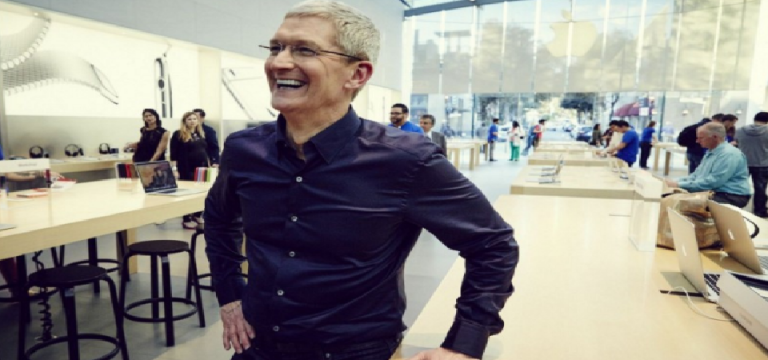
Apple is growing, but it is also looking for new sources of growth at this moment. Its effort to diversify into shows and movies is a testament that it understands that iPhone cannot carry it forever. As I have noted many times, iPhone is a hardware, and it has a finite maturity in its evolution. In other words, there is going to be a time when any new feature or advancement becomes incremental. I am not sure there is any PC or laptop anyone can sell today that will be radically differentiated from PCs and laptops we have in the market. iPhone will get to that level. And when it gets there, the new basis of competition which has brought Apple unprecedented accumulation of value will be marginal.
A post-fashionista iPhone life will be challenging for Apple, because Apple will need a business model redesign to execute any strategy for the “volume market” where quantity is as important as big purse. Having a proprietary hardware packaged in exclusive software named iOS will not fix many issues because under most cases, on services, the sheer volume of users matter.
You may have 100 iPhone buyers, and you can make good money from them. But when you launch TV shows, the advantage may not just be having 100 iPhone users, but having as many people in the ecosystem as possible, unless the purpose of the shows is to stimulate the purchase of iPhone. It would be very strange if Apple makes its shows exclusive to iOS devices. Doing that will hamper growth of the services, despite a possibility of stimulating growth of iPhone and iPad, in the short-term. But that is most likely the strategy because an Apple that makes it services available to anyone is one that has lost its fashonista’s vision. That exclusivity which Apple has used will be tested and most partners will run away from it.
Register for Tekedia Mini-MBA edition 18 (Sep 15 – Dec 6, 2025) today for early bird discounts. Do annual for access to Blucera.com.
Tekedia AI in Business Masterclass opens registrations.
Join Tekedia Capital Syndicate and co-invest in great global startups.
Register for Tekedia AI Lab: From Technical Design to Deployment.
Case Study – Walmart Pay
Apple is beatable in businesses where everyone matters: poor, rich and in-between. Walmart Pay which is used in only Walmart Stores is giving Apple Pay a tough challenge. Walmart had declined to work with Apple Pay, passing over the exclusivity, for a product that welcomes anyone with a smartphone to the Walmart fold. The people include users of Android and also iPhone. That is a strategy that makes sense in all ways. It is working for Walmart.
Walmart’s decision to turn its back on a major Apple initiative might have been a smart gamble.
In a study from Pymnts.com, 5.5% of iPhone users said that they had used Apple Pay at participating retailers in June, up from 4% in March and 4.5% in October 2016. Walmart Pay, the retail giant’s mobile payment alternative, attracted 5.1% of Walmart shoppers in June. That was up from 3.3% in March. In an interview with Bloomberg, which earlier reported on the study, Walmart senior vice president of services and digital acceleration Daniel Eckert said Walmart Pay should soon pass Apple Pay for usage at participating retailers, making the retail giant’s service the most popular in the U.S.
Eckert’s comments were echoed by Richard Crone, a researcher who monitors the mobile-payment market, who told Bloomberg that Walmart Pay should be bigger than Apple Pay by the end of next year.
Like Apple Pay, Walmart Pay is a service that allows users to make purchases from their smartphones without ever taking out a credit card. However, Walmart Pay is exclusive to Walmart stores. Apple Pay is available at a variety of retail stores, including the Apple Store, Walgreens, Best Buy, and others.
The reality is that the only important differentiator in Apple Pay is the device which is made by Apple. The credit card remains ones issued by Visa, MasterCard, AmEx and Discover. Technically, the upscale Apple does not win here. Many Walmart stores customers are not necessarily affluent, so having an exclusive device like iPhone does not make sense. But having a product that can work in Android and iPhone, and agnostic of hardware, is a slam dunk.
Yes, Walmart Pay has an edge over Apple Pay which works only on iOS. There is no reason for anyone to go with Apply Pay when it is possible to combine Android and iOS. Simply, you want more devices to enable you pay with credit cards.
Walmart Pay is a feature in the Walmart mobile app that enables you to quickly, easily and securely pay with your smartphone in Walmart stores.
Walmart Pay works with any iOS or Android smartphone capable of downloading the Walmart app, at any Walmart checkout lane, and with any major credit, debit, pre-paid or Walmart Gift Card.
The path to services requires volume, and Apple’s closed iOS will be a challenge when the company stalls in its evolutionary finite hardware improvements. I do think that Apple must learn from the Walmart Pay experience: in a consumer market, especially on services, the best model is to welcome everyone. Simply, the exclusivity of iOS may not be strength, going forward.
---
Connect via my
LinkedIn |
Facebook |
X |
TikTok |
Instagram |
YouTube


